Choctaw Cultural Center in Oklahoma proves vital stop for makers of Marvel Studios' 'Echo'
CALERA — For visitors to the Choctaw Cultural Center, the “Chahta Nowvt Aya,” or “Choctaw Journey,” begins once they pass through a towering gate marked with crossed oversized stickball sticks and “The Great Seal of the Choctaw Nation.”
Using canny design, state-of-the-art technology and careful attention to detail, the 100,000-square-foot southeastern Oklahoma landmark is intended to fully immerse all who enter in the art, culture and 14,000-year-history of the Choctaw people.
“It’s actually all made with specific cultural signification,” said Yasmine Myers, Choctaw Nation cultural education coordinator, standing in the striking lobby of the Choctaw Cultural Center.
“When you come in, you'll notice our doors are kind of to the side, not on the front side of the building. This area is designed after one of our (traditional) Choctaw winter homes, so that's why: We have an entrance to the side, and it winds into the space. And then we have the kind of thatching look going on over here; that’s how our roofs are designed.”
The $75 million Choctaw Cultural Center in Calera, south of Durant, opened in July 2021 after more than a decade of research and work.
Just a few months later, the creative team of the eagerly awaited Marvel Studios series “Echo” made their first visit.
"We were actually here almost two years (ago) to the day, to meet them and talk through what we … wanted to do with the show,” Sydney Freeland, a director and executive producer on Marvel’s “Echo,” told The Oklahoman at a Nov. 3 red-carpet event at the Choctaw Cultural Center.
"Once we learned that we were portraying the character who was Choctaw, the first thing that we wanted to do was engage them. I'm Navajo; I'm not Choctaw. So, it was extremely important to me that we get the input and collaboration and dialogue created with the people with this lived experience.”
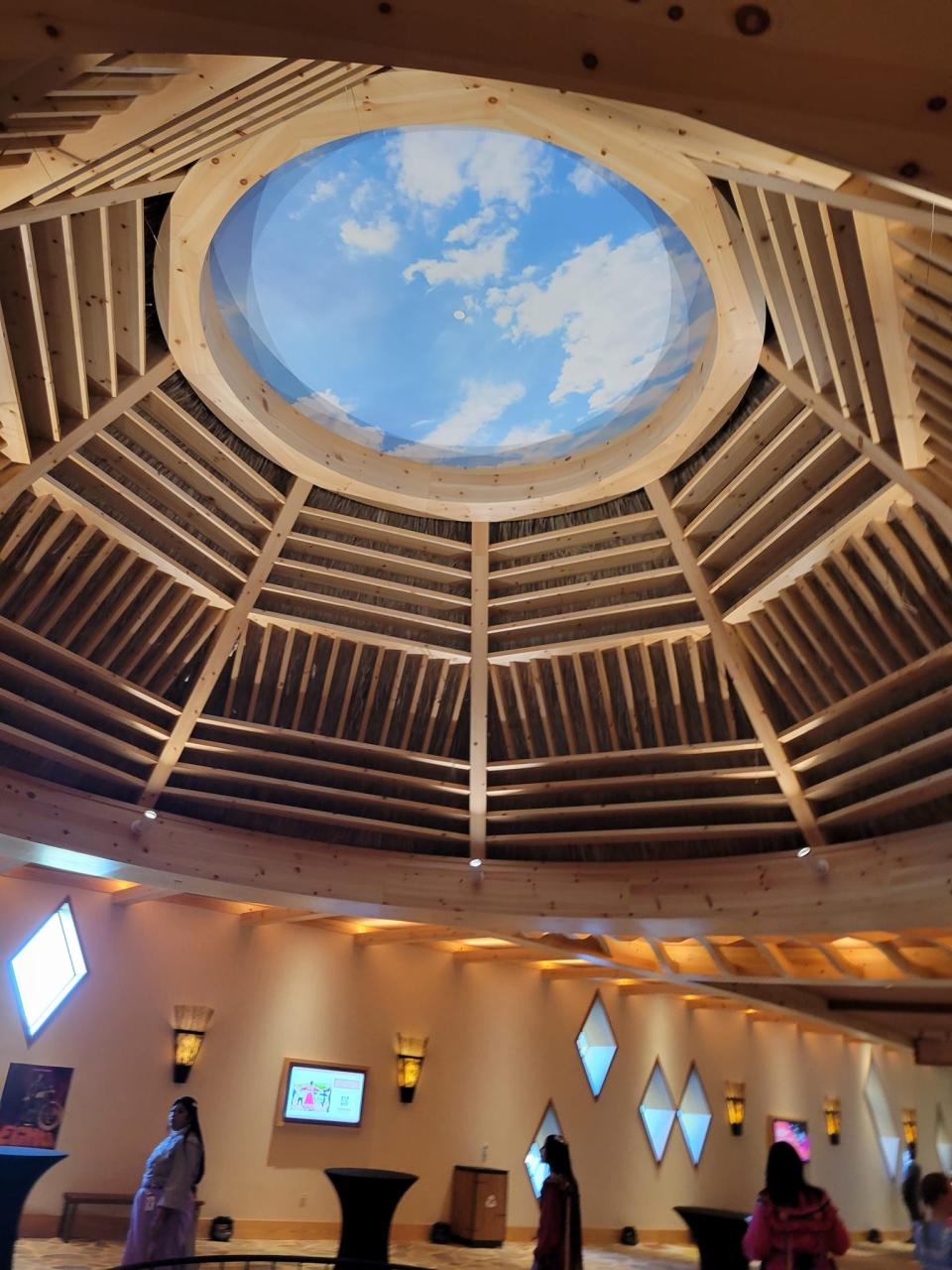
How is Marvel’s ‘Echo’ drawing attention to the Choctaw Nation of Oklahoma?
Also in 2021, Marvel Studios first introduced the Marvel Comics character of Maya Lopez, aka Echo, played by Native actress Alaqua Cox, in its "Hawkeye" Disney+ streaming series. Cox, who is Menominee and Mohican, is deaf and an amputee who uses a prosthetic leg.
Following in the footsteps of her father, William (Zahn McClarnon, “Dark Winds,” the Oklahoma-made series "Reservation Dogs”), Cox’s Maya is the fearsome commander of the New York City criminal organization the Tracksuit Mafia, which is revealed to be working for the formidable crime lord Wilson Fisk, aka Kingpin (Vincent D'Onofrio).
Screened during the November event in the Choctaw Nation, the first two episodes of “Echo” reveal that Maya is Choctaw and was initially raised in Oklahoma before a childhood tragedy prompts her father to relocate with her to NYC.
Although it was filmed in Atlanta, Georgia, the new five-episode series follows Maya as she is pursued by Kingpin's criminal empire back to her small Choctaw Nation hometown, where she must confront her own family and legacy.
Set to be released on Disney+ and Hulu Jan. 9 (a day earlier than previously announced), the gritty streaming show, which is rated TV-MA for mature audiences only, is being hailed as a major moment for Native American representation as well as for the disability community. The first two episodes of "Echo” reference the Choctaw origin story, showcase meaningful tribal traditions like stickball and include frequent use of the Choctaw language, along with American Sign Language.
"One of the things that I remember talking about when I first got here was saying, 'We're not here to tell you what we're going to do. We're here to create a dialogue, specifically because we want your input … before we’ve shot anything, before we’ve prepped anything,’” Freeland said during a post-screening Q&A at the November event in the Choctaw Nation.
“So, if this feels authentic, if it looks true-to-life, that’s because of the engagement with our wonderful partners here.”
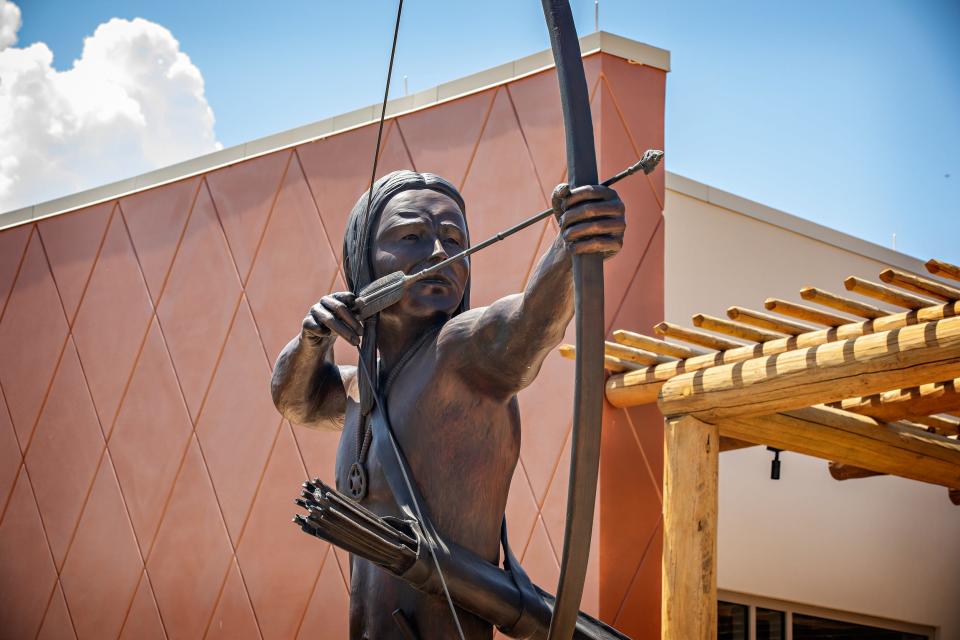
What are some highlights of the Choctaw Cultural Center?
The Choctaw Cultural Center features two exhibit halls, an art gallery, auditorium, children’s area, gift shop, café, outdoor Living Village and more, all situated on 22 acres off U.S. 75.
When it opened two years ago, Choctaw Chief Gary Batton described the center as “a living, breathing space that encapsulates centuries of the Chahta Nowvt Aya, or Choctaw Journey.”
“You can spend a whole day here and not feel like you wasted your time if you're genuinely interested in any of these topics,” Myers, the Choctaw cultural education coordinator, told The Oklahoman during a private fall tour.
Here are some highlights visitors can find at the Choctaw Cultural Center:
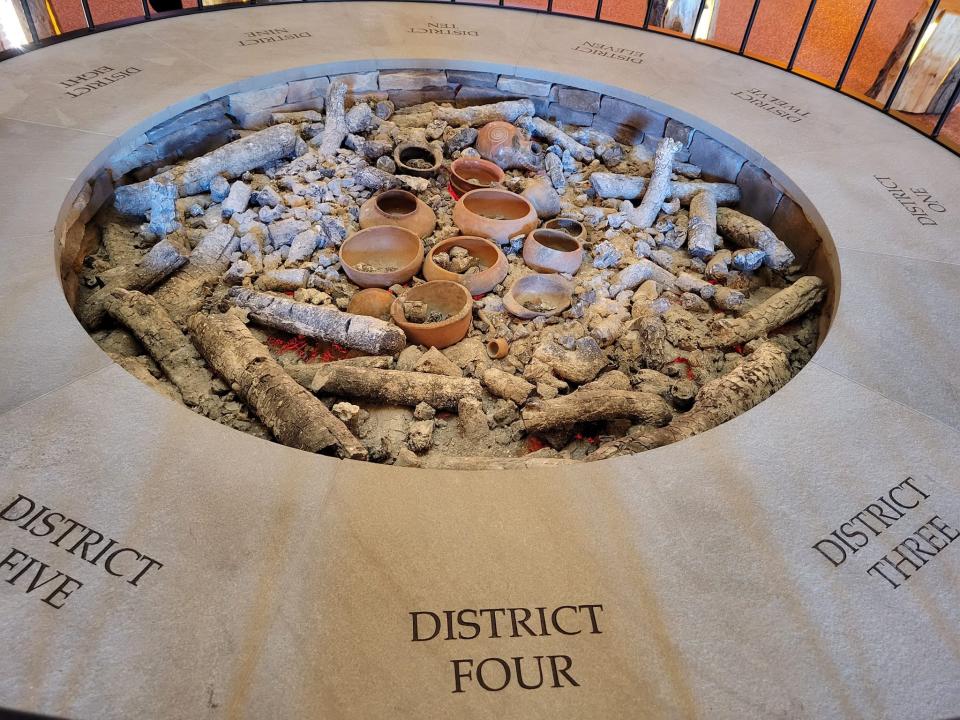
Distinctive entryway provides a sense of place
Once they pass Kingfisher artist John Gooden’s monumental bronze sculpture “Tvshka Homma,” or the “Red Warrior,” posted outside, visitors immediately find a sense of place in the distinctive entryway. The lobby is dominated by a dramatic recreation of the central fireplace opening to the sky that would be found in a traditional Choctaw home. The hearth boasts one stone for each of the Choctaw Nation’s 12 districts, and it’s ringed by sleek wooden seats.
“We have one little seat for each district as a way to say, ‘Welcome … this is your place here.’ We also have a lot of pottery in the center, and this points to the significance, in my opinion, of welcoming people into our home, whether they're Choctaw and we’re welcoming them home, or they’re nontribal and we’re welcoming them to come and spend time with us,” Myers said.
“The cool thing about Choctaw culture is, whenever you would go to someone’s house, everyone in that family has their own designated bowl. So, whenever you would visit a house frequently … they’d make your own piece of pottery and that would be yours whenever you'd come over.”
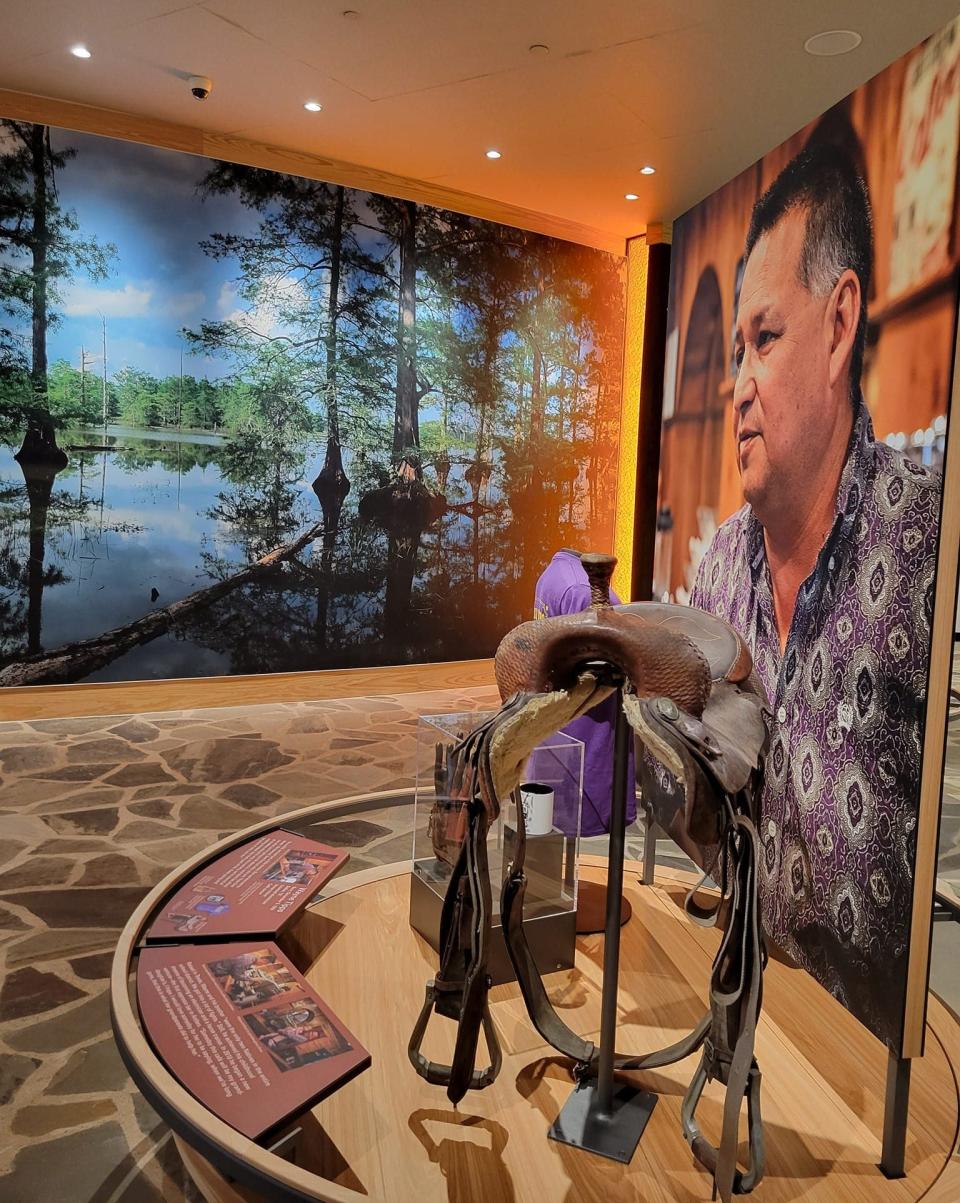
Orientation Gallery showcases contemporary Choctaw people
A dramatic stone water feature boasts a color-coded map of the Choctaw Reservation and leads into the Orientation Gallery, boasting vignettes depicting Choctaw tribal members and landscapes from each of the 12 districts.
“A lot of times people think, ‘Some Native Americans, they must still live in teepees’ … But they have normal lives, and they're still able to incorporate their culture and the values of our community,” Myers said.
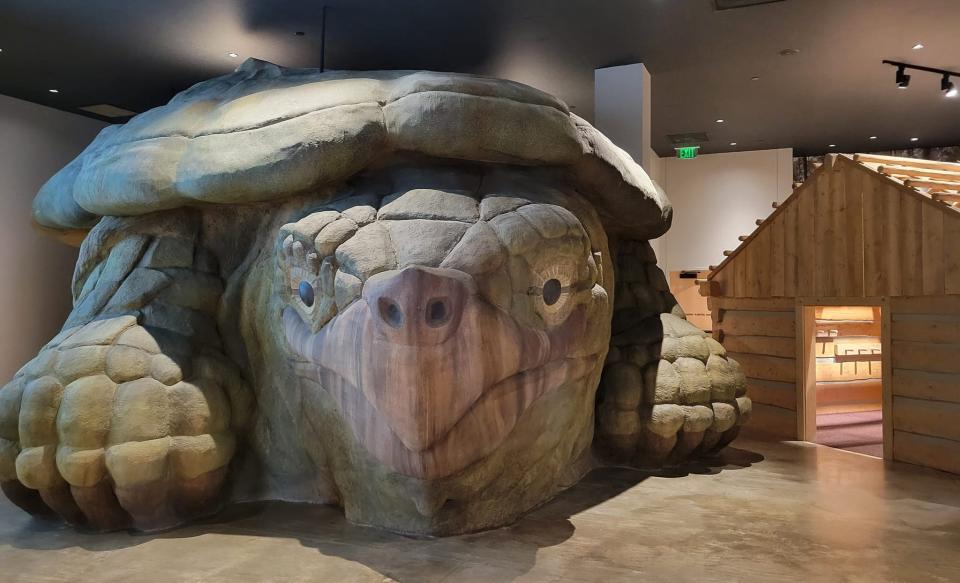
Giant turtle dominates Luksi Activity Center
Youngsters are invited to gather to sit and read traditional stories at the giant Luksi, or turtle, dominating the Luksi Activity Center. Along with books and activity sheets, the children’s area features a log cabin, summer chukka, or house, and treehouse, along with a log slide.
“For the Choctaw people, the significance of the turtle is that it lives a very long life, and we believe that's because it takes its time, it's never in a hurry, it can appreciate all the things around it,” Myers said. “We also appreciate that the turtle can live on land and water as well, so that’s a reminder to us that we need to be adaptable.”
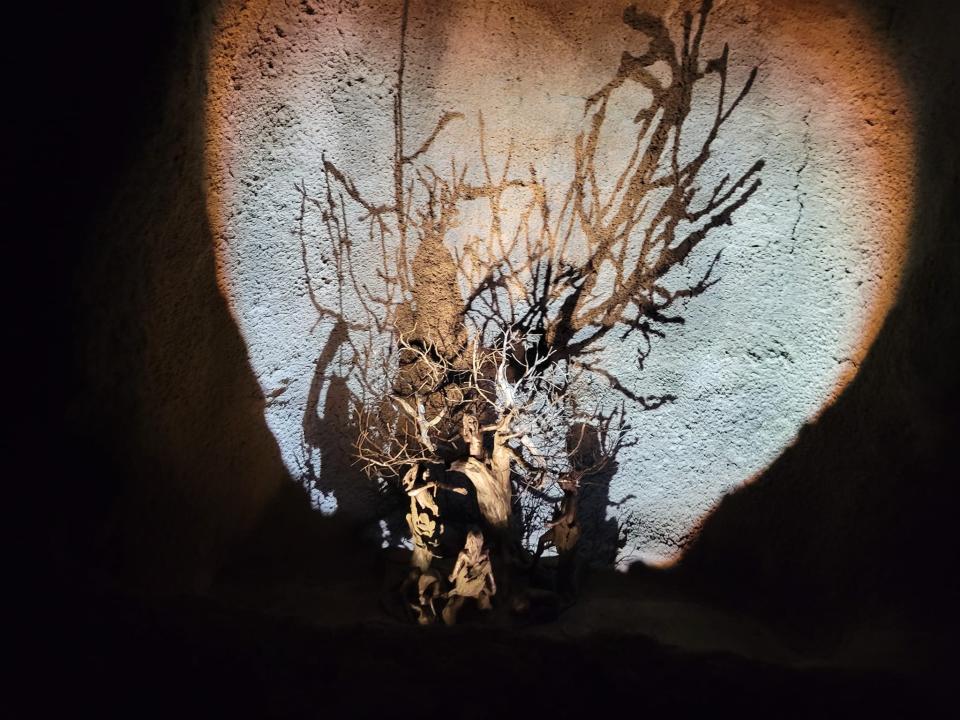
Permanent exhibit hall shares four-part ‘Choctaw Journey’
The way the tribe has adapted to its changing circumstances from ancestral times circa 1250 in what's now Mississippi to the present day in Oklahoma is showcased in the four-part permanent exhibit “Chahta Nowvt Aya: The Choctaw Journey.”
Visitors can venture into a cave where an animated shadow play shares the tribe’s underground origin story, enter the idyllic forest settlement Shomo Takali, or Hanging Moss, which is ringed by touchscreen kiosks they can use to learn the Choctaw names for the wildlife, and attend a boisterous stickball game thanks to an immersive, motion-activated video installation.
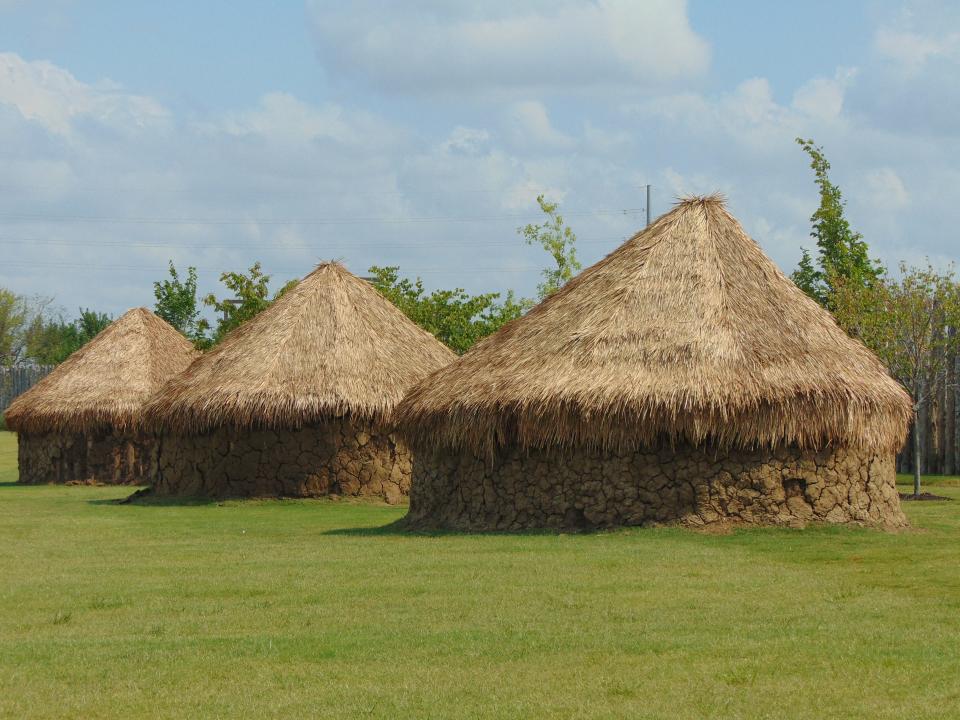
Living Village hosts daily stickball and dance demonstrations
The Living Village boasts a re-creation of a traditional Choctaw mound; replicas of Anuka Lashpa, or traditional winter homes; a garden planted with heirloom Choctaw crops; a stickball demonstration field; and a dance circle.
Weather permitting, the outdoor space hosts daily stickball demonstrations and social dance exhibitions.
Champuli Café serves up Choctaw cuisine
Serving lunch from 10:30 a.m. to 4:30 p.m., the Champuli Café lived up to its “delicious” name during the November event, which featured authentic Choctaw dishes from the menu, including pan-seared pork butt, banaha bread, pinto beans, frybread and grape dumplings.
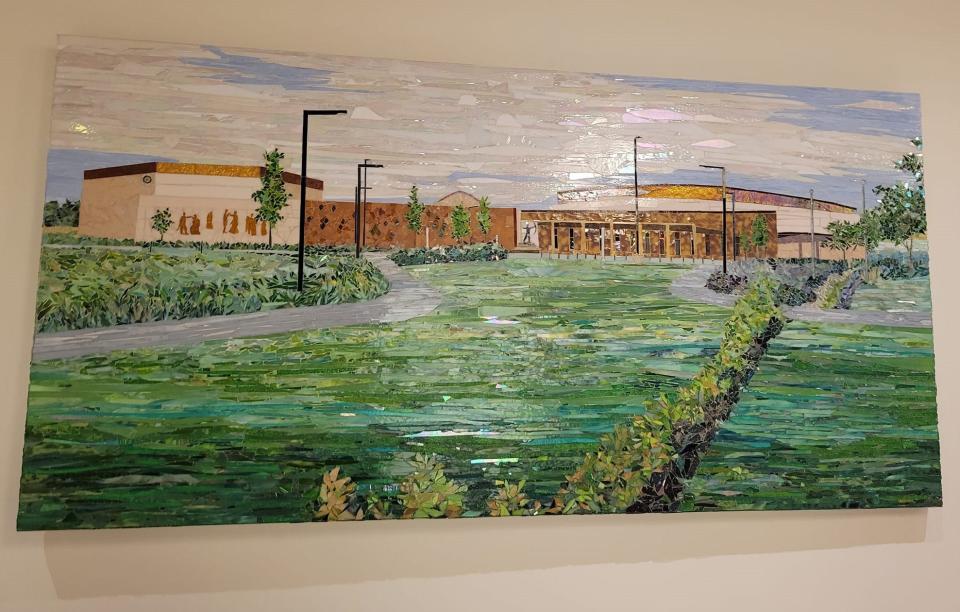
From glass art to beadwork, center showcases pieces by Choctaw artists
A wide range of works by Choctaw artists is exhibited throughout the cultural center, from d.g. smalling’s vinyl film mural “Our Future” and Samuel Paul Stitt’s beaded “Sam’s Bag” to Les Williston’s stickball stick mobile and Lauretta Newby-Coker’s glass mosaic “Gifts of Past and Present.”
“I've been to quite a few different museums and such, but they have a lot of things that I've never seen before with all the technology. … I’ve really enjoyed taking my mom, my daughter and my grandkids there,” said Newby-Coker, who is based in Noble.
“I've been proud to show everybody what it’s like, and I've encouraged so many people to go and visit there, because it's well worth it. It’s volumes and volumes of information for everybody.”
CHOCTAW CULTURAL CENTER
Where: 1919 Hina Hanta Way, Calera.
Hours: 10 a.m. to 5 p.m. Tuesday-Saturday.
Admission: Adults, $12; children ages 4-12, $6; children 3 and younger, free; Choctaw Nation members, free; military members, veterans, college students, senior citizens 62 and older and citizens of other federally recognized tribes, $9.
Information: choctawculturalcenter.com.
This article originally appeared on Oklahoman: Choctaw Cultural Center showcases Oklahoma tribe's history and heritage

